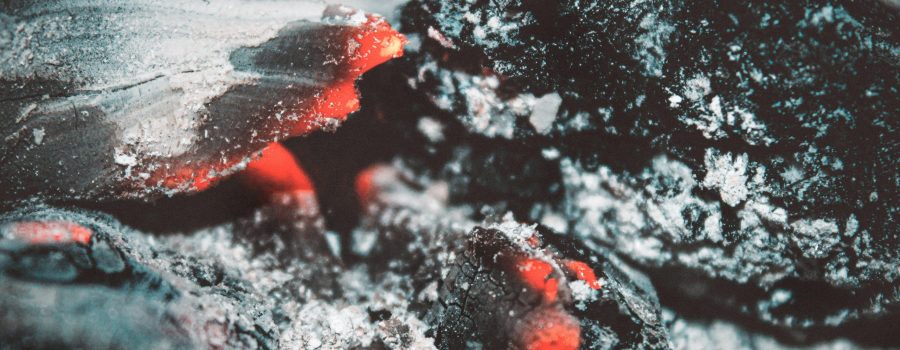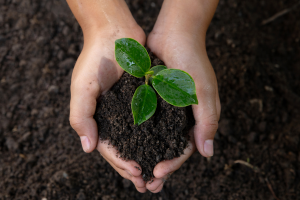Like most of the kids in my tenth grade Latin class, I was fascinated by Pompeii.
The teacher knew it was a sure-fire way to get a wandering class of teenagers to pay attention. The volcano that exploded over Pompeii came so fast that the lava and ash solidified around those who died, crystallizing in time their horrified expressions and desperate attempts to shield themselves and others from the blast.
I’m a classicist by training; I’m usually pretty well steeled to ancient descriptions of death and violence. But those pictures of Pompeii made me sick to my stomach. They still do. I look at them and can almost taste the ash on my tongue, imagine it floating down like a deadly blizzard from the sky. My teacher assured us that most of them choked on the ashes before they burned to death. I was not as comforted as I was supposed to be by that.
There is something horrifying about watching the danger come for you, about knowing what will happen, and being powerless to do anything. This time last year I had no idea that the month of March would feel like watching a slow volcano explode, tracing the spread of COVID-19 cases as they seeped from China to Seattle to New York to Cincinnati to Kenton County.
The ashes have come thick and fast ever since, and there is nowhere to go where we can outrun them.
We do our best, with masks and distancing, but it isn’t always enough. There are nearly two and a half million people who weren’t supposed to be gone from this world today. Ashes to ashes, dust to dust. Gone.
The last year has felt like choking on ashes. Each time I cancelled something joyful, each time I felt like such a useless pastor that I didn’t deserve my calling, much less my paycheck, each lost opportunity, each anxious covid test, each new report of a diagnosis. In my first four years at this church, I did four funerals total. In the past twelve months, I’ve done nine. Only one died of COVID, but at each one we faced the same grief upon grief of not being able to gather, to eat, to hug, to offer watery smiles. We wear masks of grief underneath our COVID masks.
My beloved grandmother died just before Christmas. I wasn’t there when she was sick. I metered out my hugs to my grandfather at the funeral. It aches like nothing I’ve ever known, a bright raw spot on all the piled dull hurts of the last year.
Today is Ash Wednesday, when the church year takes it upon itself to remind us that we are frail, mortal, and destined for dust. In brighter, easier, glossier years, I need that reminder.
This year, with my tongue coated in ashes, it makes me want to spit.
But still, ever-dutiful to the liturgical calendar, I put the ashes on my head this year. Two black smudges, to form a shoddy cross under my bangs.
I could have skipped it. I know lots of folks are: it’s too much, it isn’t necessary, it’s too dangerous. I don’t grudge them their choice at all.
But if I have learned anything this year, about grief, about loss, its that if I keep swallowing it down, I will suffocate. The more I insist everything is fine on the outside, the more my insides are coated in sorrow.
Sometimes the only thing to do is to bring the inside out.
I did not expect to cry, putting the ashes on my forehead, alone in my office. But I did. Because for once, my insides matched my outsides. For once, I let the ashes rest lightly on my skin, instead of coating my throat. For once, I let myself be marked with grief—a sign and symbol like the black bands folks in mourning used to wear, to ask the world to be gentle.
I thought I would hate the ashes this year. But in their strange and reliable way, they are bringing me peace instead. Today I don’t have a false face. Today I’m not trying to be chipper about creative! innovations! or to theologize about faith through suffering.
Today I’m just putting my ashes on display for all to see. And as I see other folks’ foreheads, with crosses of ash or soil or charcoal or even black eyeshadow, I’m seeing that I’m not alone.
We’ve all been running from the ashes a very long time. Today we sit and rest. There are things out there that will kill us—viruses and cold snaps, tornados and hunger. This grief isn’t one of them.
Ash Wednesday is a reminder that grief is nothing to be frightened of. It simply is. We wear our grief like a mark on our souls, as soft and sacred and tenderly imposed as that ashen cross.
Whether or not you put ashes on your head today, take a moment and remember:
Your grief is holy.
Your grief is worthy.
Your grief is proof
of God’s loving heart
that beats inside your chest
and breaks to see God’s children suffer.
Remember that you are dust,
and to dust you shall return,
and that through it all,
you are held in the arms of God.





Leave a Reply
Your email is safe with us.